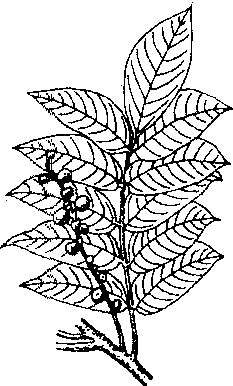山楝polystachyous aphanamixis
Aphanamixis polystachya,别名山罗、假油桐、沙罗等。楝科山楝属乔木。染色体2n=36。高20~30m。奇数羽状复叶互生,小叶5~11,对生,矩圆形,具小的透明斑点,全缘;花杂性异株,黄色带紫色,雄花或两性花排成圆锥花序,雌花排成单生的穗状花序,花期5~9月;蒴果近卵形,黄绿色。产中国海南、广东、广西和云南,印度也有。喜光,喜温暖湿润气候,对土壤要求不严。种子繁殖。山楝树体高大,枝叶美丽,花、果均具观赏价值,可于庭园中孤植或作行道树。
山楝polystachyous aphanamixis
Aphanamixis polystachya (Wall.)R.N.Parker,又称铁罗、沙椤。楝科,山楝属。常绿乔木,高达30 m。奇数羽状复叶,长30~50 cm,小叶4~6对,矩圆形,长18~20 cm,宽4~5 cm。花杂性异株;花序短于叶,雄花序分枝,雌花序不分枝;萼片4—5;花瓣3,黄色带紫;雄蕊5~6,花综合生成筒;子房3室。蒴果卵圆形,3裂种子有假种皮。分布于广东、广西、云南等省区。生于土层深厚肥沃的平原、丘陵地区。木材坚硬,供建筑等用材。种子可榨油供工业用。

山楝